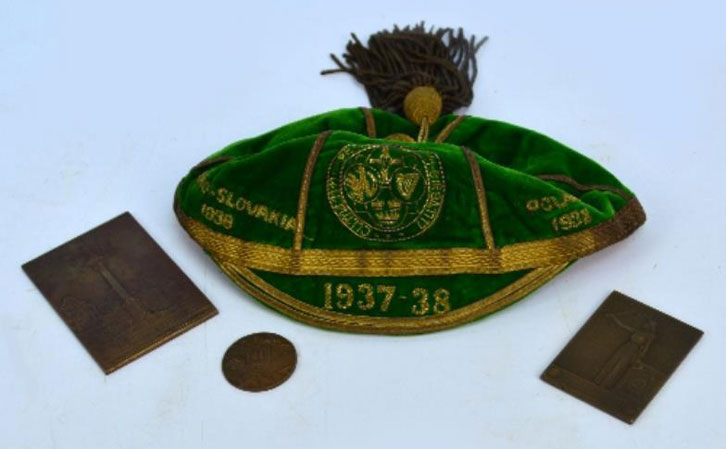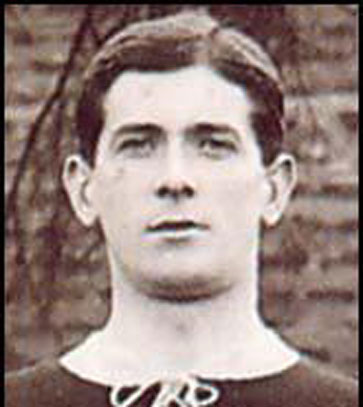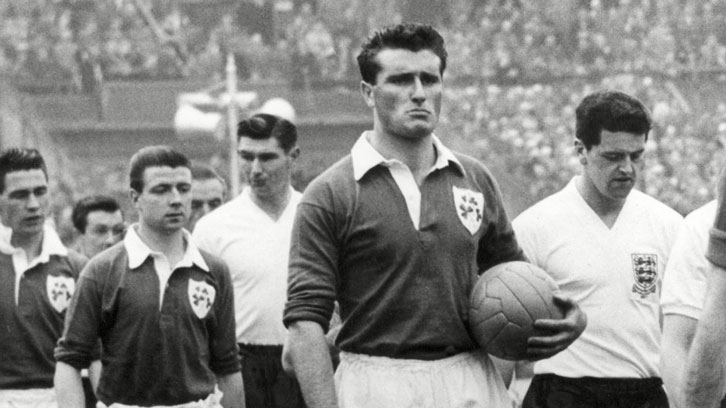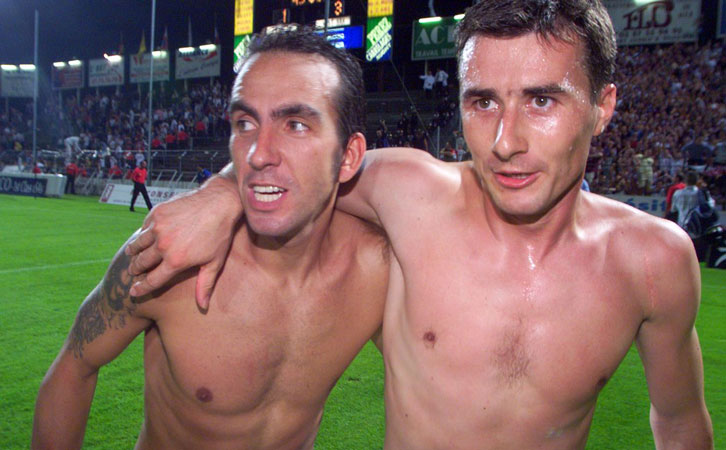
Continuing our alphabetic journey through 125 years of West Ham United history…
Irish players
West Ham United have been represented by a steady stream of players from across the Irish Sea.

The first Irishman to wear Claret and Blue was Alec McCartney, who joined from Everton in 1905 and made six appearances as a right-back in the Southern League First Division.
Born in Ballynafeigh in the southern part of Belfast in 1882, McCartney played for Distillery and Linfi eld before moving to Everton. He returned home to play for Belfast Celtic in 1906 and was capped six times by Ireland.
Since then, no fewer than 27 other men born on the island of Ireland have played for the Hammers, in addition to a number who were born elsewhere but were capped by Northern Ireland and Republic of Ireland.
In all, 17 Hammers have been capped by Ireland or the Republic of Ireland, and ten by Northern Ireland.
First international
While the aforementioned McCartney was capped by Ireland after leaving West Ham, the first player to be capped while a Hammer was Charlie Turner, who captained Ireland in a 2-2 draw in Czechoslovakia in May 1938.
By then, the island had been split into two parts, established in 1922 by the Anglo-Irish Treaty that ended the Irish War of Independence, with Northern Ireland comprising six counties in the north east, and the Irish Free State comprising 26 counties covering the remainder of the landmass.
Both football associations, the Northern Ireland based IFA and the Irish Free State-based FAI, claimed jurisdiction and selected players from across the entire island.
Born in Athlone, County Westmeath, centre-half Turner moved to to Lancashire as a youngster and, after playing for Leeds United and Southend United, he joined Second Division West Ham midway through the 1937/38 long-serving defender Jim Barrett.
Turner kept a clean sheet on a before joining Hartlepools United in summer 1939.
However, the Second World War put paid to his career in England and he returned home to Ireland, where he played and coached at Waterford before managing Dublin-based Shelbourne.
Most appearances
The Republic of Ireland was declared in 1949 and three years later the late Noel Cantwell made his West Ham debut.
One of the finest full-backs of his generation, Cantwell represented the Hammers on 278 occasions between November 1952 and September 1960 – more than any other Irishman – having been spotted playing for his hometown club Cork Athletic.
Cantwell captained the Irons to promotion from the Second Division in 1958, ending a 26-year absence from the top-flight, before being an ever-present and leading the team to their joint-best League finish of sixth in the old First Division the following season.

Off the pitch, Cantwell was a deep thinker about the game and, alongside the likes of Malcolm Allison, Phil Woosnam and Dave Sexton, helped mould the coaching and tactical approaches that would create the Academy of Football.
On departing West Ham, Cantwell joined tonight’s visitors Manchester United, who he captained to FA Cup glory in 1963, while he was capped 36 times by his country.
Later in life, he managed Coventry City, Peterborough United and in the United States, while he also scouted for England manager Sven-Goran Eriksson, before passing away in 2005 at the age of 73.
The Greatest
Arguably the greatest Irish footballer of all-time, Liam Brady, wore a West Ham shirt between March 1987 and May 1990.
Born in Dublin in 1956, the attacking midfielder excelled for St Kevin’s Boys before joining Arsenal at the age of 15 in 1971 – the same year the Gunners won the Double.
He would spend seven seasons in the first team, winning Arsenal’s Player of the Year award three times, lifting the FA Cup in 1979 and signing off with an appearance in the 1980 European Cup Winners’ Cup final.
The left-footed playmaker won back-to-back Italian Serie A titles with Juventus before moving on to Sampdoria, Inter Milan and Ascoli.

In March 1987, aged 31, he decided to return to London, as he wanted to bring his children up in England. After a £100,000 deal was agreed, Brady joined West Ham United.
Arguably his greatest moment in Claret and Blue came when the Irons beat an all-conquering Liverpool side 4-1 in the League Cup in November 1988.
Relegation meant Brady would spend the final season of his career in the Second Division, where he signed o with a memorable strike in a 4-0 Upton Park victory over Wolverhampton Wanderers in his 532nd and last league game as a professional in May 1990.
The Captain

Born in Hanover in what was then West Germany, where his father was stationed in the military, and raised in the town Coleraine in County Londonderry, Lomas joined Manchester City as a teenager before moving to West Ham United in March 1997.
In September of the same year, he captained Northern Ireland for the first time in a FIFA World Cup qualifying defeat in Albania.
In all, Lomas wore the armband 22 times for his country, with the final occasion being a 2-0 home UEFA European Championship qualifying defeat by Greece at Windsor Park in April 2003.
Lomas, who also captained West Ham between 1997-2001, leading the Club to UEFA Intertoto Cup glory in 1999, remained with the Hammers for a further two seasons. In all, he made 227 appearances and scored 13 goals in Claret and Blue before departing for Queens Park Rangers in August 2005.
He later returned to the Club as reserve-team manager and is now a matchday ambassador at London Stadium while also working in the media.
Born in England, Played for Ireland
A small number of West Ham United players have been capped by both Northern Ireland and the Republic of Ireland, despite not being born on the island or Ireland, through their Irish ancestry.
We have already touched upon German-born Northern Ireland captain Steve Lomas.
However, before him, Chris Hughton played twice for Republic of Ireland in 1991, having been born in Forest Gate, just down the road from Upton Park. He earned 53 caps in total, having qualified through his Irish mother.
Gary Breen was born in Hendon in Middlesex, but qualified for to play for the Republic, which he did 63 times between 1996-2006, including on nine occasions while a West Ham player between 2002-03.
Breen was a teammate of David Connolly, who earned three of his 41 caps while a West Ham player. He was born in Willesden in north west London.
More recently, Academy graduates Declan Rice, who was born in Kingston-upon-Thames, and Josh Cullen, who was born in Southend-on-Sea, both represented the Republic of Ireland.
Intertoto Cup
West Ham United lifted the second European trophy in the club’s history on 24 August 1999 – the UEFA Intertoto Cup.
Having fi nished a record-high fifth in the Premier League at the end of the 1998/99 season, Harry Redknapp’s side could have expected to qualify automatically for the UEFA Cup.
However, with only one automatic qualification spot available through league placing, Leeds United were joined in the UEFA Cup by FA Cup runners-up Newcastle United and League Cup winners Tottenham Hotspur.
That left the Hammers to enter the UEFA Intertoto Cup, a summer competition for clubs that ran between 1995-2008, with three ‘winners’ progressing to the UEFA Cup first round.

West Ham kicked-off their challenge on 17 July by beating Finnish outfit Jokerit 1-0 in the first round first leg, in front of just 11,098 supporters at the Boleyn Ground.
A 1-1 draw in Helsinki saw the Hammers through to a semi-final with Dutch side Heerenveen.
Identical 1-0 victories in both legs set up a fi nal meeting with French club Metz, who had fi nished tenth in Ligue 1 the previous season.
A 1-0 home defeat left Redknapp’s side’s hopes of reaching the UEFA Cup hanging by a thread, but three goals — a thumping strike from Trevor Sinclair, a trademark fi nish from Frank Lampard and Paulo Wanchope’s goal eleven minutes from time — completed a memorable turnaround in front of a 19,599-strong crowd at the Stade Saint-Symphorien.